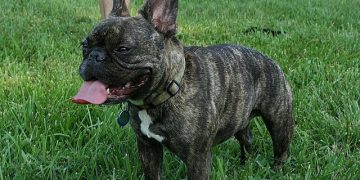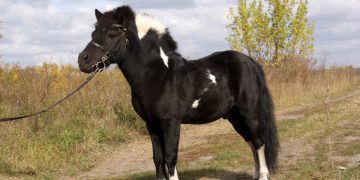Kinkajous, often referred to as “honey bears,” are fascinating, nocturnal mammals native to the tropical forests of Central and South America. Known for their playful demeanor, prehensile tails, and unique appearance, these small creatures are gaining popularity as exotic pets and captivating people worldwide. This guide will explore their biology, behavior, care requirements, and the challenges of keeping kinkajous in captivity.
1. What is a Kinkajou?
a. Taxonomy and Classification
- Scientific Name: Potos flavus
- Family: Procyonidae (related to raccoons, not primates)
- Habitat: Rainforests, ranging from southern Mexico to Brazil
b. Physical Characteristics
- Size: About 16-24 inches in body length, with a tail as long as their body. Adults typically weigh 3-7 pounds.
- Fur: Soft, dense, and golden-brown, which provides camouflage in their natural habitat.
- Prehensile Tail: Acts as a fifth limb, aiding in climbing and balance.
- Unique Tongue: Long and narrow, perfect for extracting nectar and honey.
c. Lifespan
In the wild, kinkajous live around 20-25 years, but in captivity, they can live up to 30 years with proper care.
2. Natural Habitat and Behavior
a. Nocturnal Lifestyle
Kinkajous are strictly nocturnal, spending their nights foraging and exploring and their days sleeping in tree hollows or dense foliage.
b. Diet in the Wild
- Primarily frugivorous (fruit-eaters), with a diet consisting of fruits, nectar, and occasionally small insects.
- Their role as seed dispersers is crucial for rainforest ecosystems.
c. Social Structure
- Generally solitary but can form loose social groups.
- Communication includes vocalizations, scent marking, and body language.
3. Why Are Kinkajous Unique?
- Flexible Ankles: Kinkajous can rotate their ankles 180 degrees, allowing them to climb down trees headfirst.
- Pollination Role: While feeding on nectar, they inadvertently pollinate flowers, much like bats and bees.
- Playful Nature: They are curious and active, often engaging in playful behavior, which makes them endearing to humans.
4. Caring for a Kinkajou as a Pet
a. Legal Considerations
Before acquiring a kinkajou, check local laws and regulations regarding exotic pet ownership. Some regions require permits or prohibit ownership altogether.
b. Housing Requirements
- Space: Provide a large, secure enclosure with plenty of vertical space for climbing. A minimum of 6x6x6 feet is recommended, though larger is always better.
- Enrichment: Include branches, ropes, platforms, and hammocks to mimic their natural environment and keep them mentally stimulated.
- Temperature and Humidity: Maintain temperatures between 70-85°F and humidity levels around 50-70%.
c. Diet
- Fruits: Mangoes, bananas, papayas, and melons should form the bulk of their diet.
- Supplements: Occasionally offer vegetables, cooked grains, and protein sources like boiled eggs.
- Avoid: Foods high in sugar, chocolate, caffeine, and anything toxic to animals.
d. Behavior in Captivity
- Socialization: Early and consistent interaction helps build trust and reduce aggression.
- Activity Levels: Kinkajous are most active at night, so be prepared for nocturnal noise and energy.
5. Challenges of Keeping a Kinkajou
a. Aggression
Though generally docile, kinkajous can become aggressive, especially if startled or improperly socialized. Bites and scratches can occur.
b. Longevity
With lifespans of 20+ years, owning a kinkajou is a long-term commitment that requires consistent care and attention.
c. Veterinary Care
Exotic animals require specialized veterinarians, which can be costly and difficult to find. Routine health checks are essential to prevent illnesses.
6. Conservation Status and Role in the Ecosystem
Kinkajous are currently classified as “Least Concern” by the IUCN, but habitat destruction and the exotic pet trade pose threats to their populations.
a. Conservation Challenges
- Deforestation for agriculture and urbanization reduces their natural habitat.
- The illegal pet trade can lead to population declines and suffering for captured animals.
b. Supporting Conservation
- Avoid purchasing animals from unverified sources to discourage the illegal pet trade.
- Support organizations that protect rainforests and their inhabitants.
7. Fun Facts About Kinkajous
- Kinkajous are sometimes mistaken for monkeys due to their dexterous tails and arboreal habits.
- Despite their nickname “honey bears,” they aren’t related to bears and only occasionally eat honey.
- They have a highly developed sense of smell, helping them locate ripe fruits and nectar.
Conclusion
Kinkajous are fascinating creatures with unique characteristics that make them stand out in the animal kingdom. While they can be rewarding pets for experienced owners, they require significant time, resources, and dedication. If you’re captivated by their charm, consider supporting conservation efforts to protect them in the wild.
Whether you’re drawn to their playful nature, ecological importance, or exotic allure, kinkajous are a testament to the incredible diversity of life in our rainforests.

























